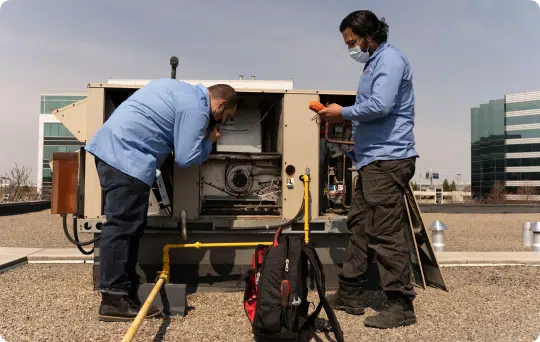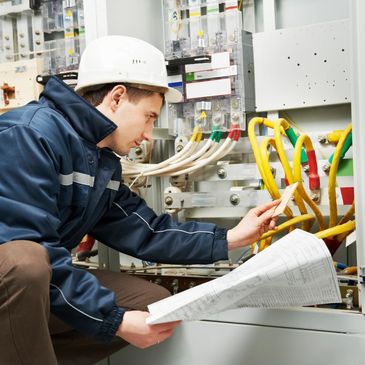The Significance of Cooling And Heating Setup: Key Factors To Consider for a Comfy Indoor Environment
The setup of a Cooling and heating system is an essential component in attaining a comfy and energy-efficient indoor atmosphere. Aspects such as the viability of the system for specific building demands, appropriate sizing to circumvent inadequacies, and the experience of contractors for a quality setup play pivotal duties. The adoption of advanced modern technologies can considerably enhance system performance.
Choosing the Right System

When choosing a HVAC system, it is crucial to review the capability required to efficiently warm or cool the space without straining the system, which can lead to enhanced wear and functional costs. Consulting with a specialist HVAC contractor can provide useful understandings into selecting a system that straightens with both the architectural layout and the anticipated use patterns of the building.
Additionally, thinking about the assimilation of clever technology can improve system administration and tracking, providing greater control and potential expense financial savings. By meticulously assessing these aspects, one can make sure the selection of a HVAC system that not just fulfills immediate demands however also contributes to long-lasting operational sustainability and owner comfort.
Recognizing Power Effectiveness
Understanding energy efficiency is necessary when considering a HVAC installment, as it straight impacts both the environmental impact and the operational costs of the system. High-efficiency HVAC devices are developed to make use of less power to attain the same degree of comfort as less reliable models, thus minimizing utility costs and promoting sustainability. The efficiency of a HVAC system is typically indicated by ratings such as SEER (Seasonal Power Effectiveness Proportion) for a/c or AFUE (Yearly Gas Use Effectiveness) for heating systems. Higher ratings signify better efficiency and lowered energy intake.

Purchasing an energy-efficient a/c system not only equates to cost savings however likewise contributes favorably to environmental preservation by lowering greenhouse gas exhausts. Furthermore, several jurisdictions use motivations or rebates for the installment of high-efficiency systems, further boosting their financial appeal.
When assessing energy effectiveness, think about sophisticated attributes such as variable rate electric motors, wise thermostats, and zoning abilities. These developments enhance the system's capacity to change to differing need, thus optimizing energy use. It is important to seek advice from heating and cooling specialists that can give insights into the most effective options customized to particular climate conditions and usage patterns, making sure maximum efficiency and convenience.
Value of Appropriate Sizing

Alternatively, an undersized cooling and heating system will certainly have a hard time to reach the desired temperature, especially throughout severe weather. This can cause continuous operation, bring about greater energy prices and possible overheating of system parts. In addition, insufficient sizing can bring about inconsistent temperature level distribution, triggering certain Discover More Here locations of a building to be also warm or as well cool.
To achieve the appropriate sizing, a complete tons estimation is necessary. This involves evaluating various elements such as the building's square video footage, insulation degrees, home window kinds, and neighborhood environment problems. By precisely establishing the heating and cooling down demands of a room, HVAC professionals can advise systems that make certain reliable procedure, decreased energy intake, and improved indoor comfort.

Making Sure Quality Installment
A smooth heating and cooling setup is the foundation of a system's durability and efficiency. Making sure top quality setup involves careful interest to detail, adherence to industry standards, and utilizing competent professionals. The process starts with selecting a licensed and experienced cooling and heating specialist. This professional need to possess in-depth expertise of varied systems and be skilled at evaluating the particular requirements of the building.
Proper installment goes beyond plain placement of equipment. It includes specific calibration to guarantee ideal air flow, effective energy usage, and uniform temperature level circulation. This includes exact ductwork installation, making sure connections are safe and leak-free, which is essential for maintaining system performance and indoor air top quality.
Furthermore, the execution of sophisticated diagnostic devices throughout installment can spot potential problems early, stopping expensive repair services and prolonging the life expectancy of the system. The professional needs to additionally make certain that all parts are suitable which the system conforms with regional building regulations and regulations.
Routine Maintenance Practices
When the check here foundation for a high-performing HVAC system is developed via top quality installation, the emphasis ought to shift to normal maintenance practices to make certain ongoing effectiveness and dependability. Regular upkeep not only expands the life expectancy of the system but likewise boosts interior air high quality, reduces power usage, and prevents pricey repair work. Crucial upkeep tasks consist of frequently changing air filters, cleaning up evaporator and condenser coils, and inspecting the system for blockages or leakages.
This basic job can substantially boost air flow and system effectiveness. Furthermore, specialist technicians ought to check the system annually, inspecting for cooling agent levels, electrical links, and overall system efficiency.
Attention to ductwork is also vital; securing and cleansing air ducts routinely prevents air loss and contamination. Carrying out a maintenance routine ensures that minor issues are dealt with before they intensify, securing the system's functional stability. By adhering to these maintenance methods, property owners can enhance their a/c system's capability and keep a comfy indoor atmosphere year-round.
Final Thought
By selecting an appropriate system customized to specific structure requirements, comprehending energy performance, and guaranteeing proper sizing, ineffectiveness can be lessened. The involvement of knowledgeable contractors guarantees top quality installation, while the assimilation of sophisticated modern technologies boosts system efficiency and tracking.
Numerous types of Heating and cooling systems are readily available, consisting of split systems, crossbreed systems, duct-free systems, and packaged heating and air systems, each with distinct benefits and constraints.
Comprehending power efficiency is necessary when taking into consideration a Heating and cooling setup, as it straight impacts both the environmental impact and the functional costs of the system. The effectiveness of a Cooling and heating system is typically explanation indicated by scores such as SEER (Seasonal Energy Effectiveness Ratio) for air conditioners or AFUE (Yearly Fuel Usage Performance) for heaters (air conditioning installation Brownwood TX).When the foundation for a high-performing HVAC system is developed through quality installment, the emphasis should move to routine upkeep methods to make certain continued performance and integrity. In addition, specialist service technicians need to evaluate the system each year, examining for cooling agent degrees, electrical connections, and overall system efficiency